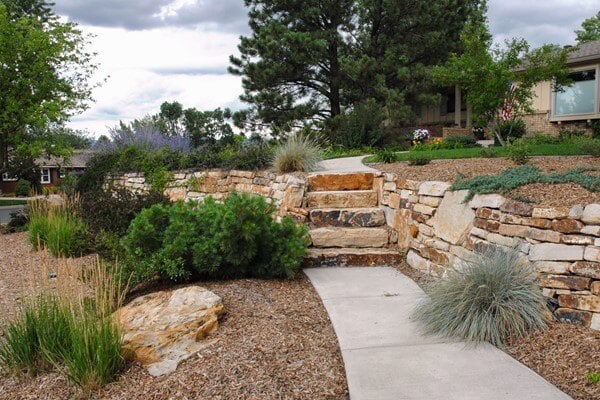Purple Smoketree
Purple smokebush is an upright shrub with rounded, velvety-purple leaves. In summer, it develops beige-colored flowers that are not very noticeable.
The flowers turn into gorgeous, fluffy panicles of fine, pinkish hairs on elongated stalks, which look like "smoke."
Despite its attractive appearance, this shrub can sometimes suffer winter dieback in the Colorado Springs area. It is best used in a protected location.
.jpg)
.jpg)
.jpg)
.jpg)
.jpg)
.jpg)
.jpg)
.jpg)
.jpg)
.jpg)
Purple Smoketree
Purple smokebush is an upright shrub with rounded, velvety-purple leaves. In summer, it develops beige-colored flowers that are not very noticeable.
The flowers turn into gorgeous, fluffy panicles of fine, pinkish hairs on elongated stalks, which look like "smoke."
Despite its attractive appearance, this shrub can sometimes suffer winter dieback in the Colorado Springs area. It is best used in a protected location.
Plant details
Botanic Name
Cotinus coggygria 'Royal Purple'
Pronunciation
ko-TYE-nus kog-GY-gree-uh
Mature Height
8 to 10 ft.
Mature Spread
6 to 10 ft.
Water usage
One Droplet: Water twice per month or less, once established.
Two Droplets: Water about once per week, once established.
Three Droplets: Water about twice per week, once established.
Flower Color
beige
Bloom time
June
Colorado Native
No
Natural Habitat
species is native to southern Europe to central China
Light Requirements
sun
Cold Hardiness
USDA zones 5-8
Elevation Limit
hardy to 6,000 ft.
Performance
There is one purple smoketree planted in the low water zone at the Water Wise Demonstration Garden. It is a beautiful shrub with beautiful burgundy leaves. The seedheads create a eye-catching, unique texture in the landscape.
Although purple smoketree sometimes suffers from deer damage and winter dieback at the Demonstration Garden, it seems to recover by producing new growth. There are several beautiful specimens in private yards in downtown Colorado Springs.
Maintenance
Remove any winter-killed branches as needed. Best bloom will occur if spring pruning is minimal because the "smoke" grows on the branches produced the previous year.
See in a landscape
With higher water using plants like Kentucky bluegrass, it's important to make sure that the ground is level where it's planted to prevent the water from running right off when watered. The stone walls in this yard help make a flat place to plant and add interest and texture to the front yard. Because this yard is so big, much of the grass was removed from where it was not useable, and shrubs and low maintenance perennials were planted instead. Wood chip mulch helps the soil from drying out in the heat of the summer and also helps to prevent weeds from growing around the plants.
Xeriscape is a great opportunity to showcase plants with different colors and textures. This yard uses ornamental trees, evergreen shrubs, striking ornamental grasses and a native grass lawn to breathe life into a yard that used to be all Kentucky bluegrass. The parkway strip is home to the existing juniper that has been partnered with large maiden grasses and a pathway which accommodates foot traffic from the street parking. A native grass turf covers about half of the remaining yard with planting beds around the perimeter that feature low water perennials, grasses and groundcovers.


.jpeg)
.jpeg)
.jpeg)
.jpeg)
.jpeg)
.jpeg)
.jpeg)
.jpeg)
.jpeg)
.jpeg)